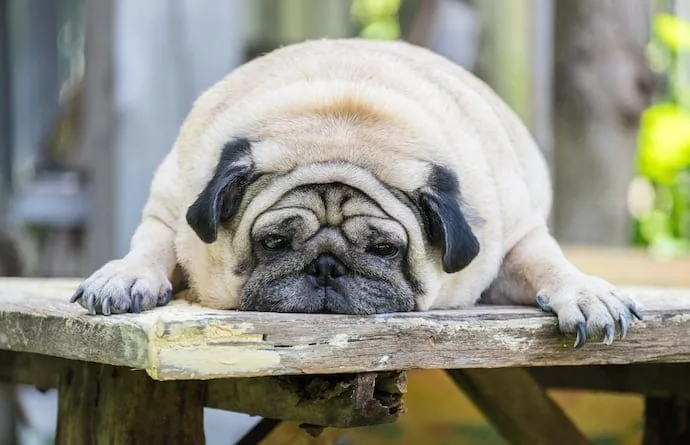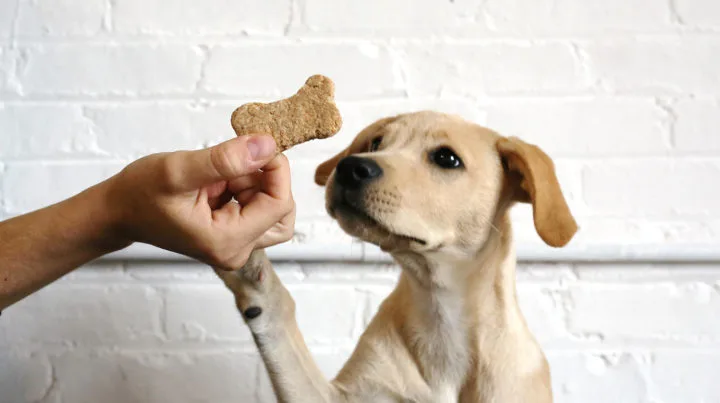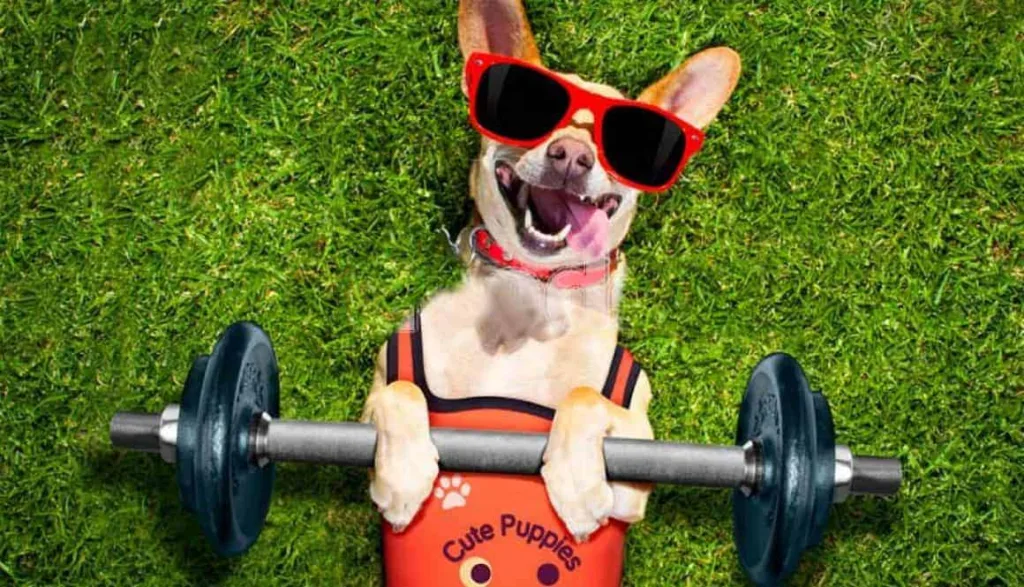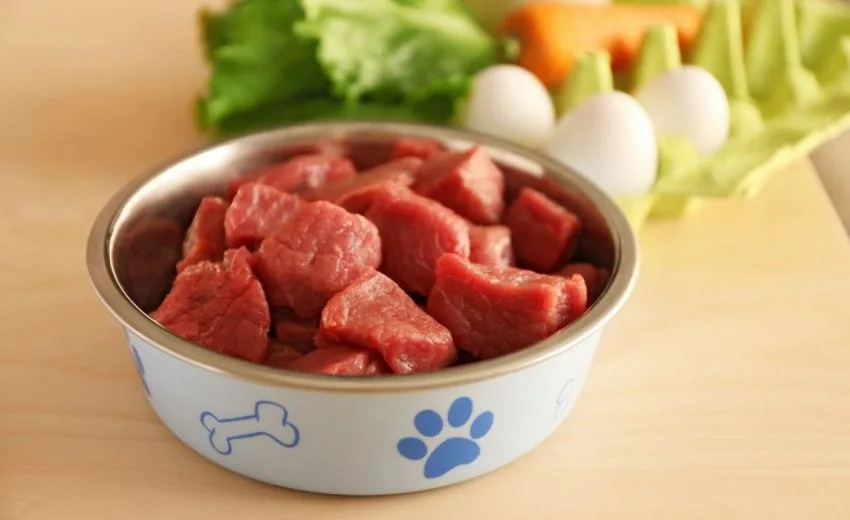Obesity is a growing health crisis for our furry friends. As many as half of all dogs are overweight or obese, putting them at risk for diabetes, arthritis, cancer and more. The good news? With some lifestyle adjustments, you can help your pooch slim down and improve their health. This guide covers the basics of safe, sustainable canine weight loss.

Introduction
A. Rising rates of canine obesity and importance of weight management
It’s no secret that obesity is a major problem for people, but you may be surprised to learn that our dogs are struggling with it too. Studies indicate up to half of household pups are overweight or obese. With all that fluffy fur, it can be tricky to tell if your pooch is packing extra pounds. But even moderate weight gain can impact your dog’s lifelong health.
The risks span from arthritis pain and immobility to breathing issues, diabetes and higher cancer rates. Simply put: excess weight puts major stress on your pup’s vital organs. As dog owners, we owe it to our furry friends to help them maintain a lean, healthy body. The earlier you start, the more years you’ll have together to play, go on adventures and cuddle up comfortably.
B. Taking a lifestyle approach: diet, exercise, enrichment
Getting your dog to an ideal fitness level involves more than just cutting back kibble. The most success comes from a whole lifestyle makeover. Of course their diet is crucial, but increasing activity and enriching their environment also makes a major difference. With the right well-rounded program in place, you can watch your buddy thrive at a healthy new weight.
C. Working with your vet to determine the best weight loss plan
Your trusted veterinarian should play a key role in developing your dog’s weight loss strategy. They can examine your pup to rule out any underlying conditions, accurately determine their ideal weight based on factors like breed, age and body type, and monitor their progress. Some vets also employ pet nutritionists to design customized diet plans. This professional guidance is invaluable for pets with health issues or that require unique nutrition.

Getting Back to Basics: Understanding Healthy Canine Weight Loss
A. Contributing factors: genetics, nutrition, activity levels, health issues
A complex mix of factors influence your doggo’s weight, some beyond their control. Genetics play a big role, with some breeds intrinsically more vulnerable. Nutrition is key too. Even healthy diets can lead to obesity if fed in excess. Then there’s activity levels, underlying illnesses, age, reproductive status and more. With so many variables, it takes a holistic program tailored to your pup’s needs to get their weight where it should be.
B. Dangers of obesity – arthritis, diabetes, shortened lifespan
The strains of obesity on your dog’s vital organs seriously impact their quality of life. Carrying excess body fat puts them at high risk for arthritis, struggling to walk, run and climb stairs comfortable. It also makes diabetes far more likely by interfering with their blood sugar regulation. Add in increased chances for liver disease, heart disease, urinary issues, cancer and more. Sadly, obesity takes years off their lifespan too.
C. Setting weight loss goals and monitoring progress
To kickstart your dog’s weight loss, your vet will determine their optimal weight based on health and body type. This gives you a goal to work towards. Recording their progress along the way keeps things on track. Initially you may see rapid slimming as excess water weight drops off. Then aim for steady, sustainable loss of 1-2% per week. Keeping charts helps ensure they’re not losing muscle rather than fat. Regular vet checkups ensure their program stays safe and appropriate as the pounds come off.
Key Elements of a Weight Loss Diet
A. Calorie control and portion sizes
At its core, weight loss boils down to a calorie deficit, burning more than they consume. Feeding your portly pooch less reduces excess energy stored as fat. Check your dog food’s label or consult your vet to learn their ideal daily calorie intake. Reduce portion sizes gradually as needed to reach this target. Avoid extreme restrictions or crash dieting as this risks nutritional gaps. Their program should provide complete, balanced nutrition just in smaller amounts.
B. Lean proteins for muscle retention
Dogs require sufficient protein as part of a weight loss regimen. Choose options with lean yet quality proteins like chicken, fish, soy or legumes. Seek out meat-based proteins as the first few ingredients. Protein provides essential amino acids dogs need to retain and even build calorie burning muscle mass. THIS both promotes healthy weight loss and preserves quality of life by supporting strength and mobility.
C. Fruits/veggies for nutrients and fiber
Look for weight control dog foods listing vegetables, fruits, nuts or legumes as key ingredients. Options like sweet potato, pumpkin, apples, blueberries and broccoli provide vital nutrients. There are also great fresh fruits and veggies you can use to supplement balanced commercial diets if your vet approves. Produce gives antioxidants for health along with fiber that helps satisfy the appetite between meals.
D. Both commercial and homemade options
For convenience, there are many commercial weight management dog foods vet formulated to promote safe slimming. If you prefer more customization or worry about processing, homemade diets are an alternative. These require diligent planning to ensure complete nutrition—a task made easier by resources from veterinary nutritionists. Whether commercial, homemade or both find an approach tailored your dog’s needs and your lifestyle.

Other Areas to Address
A. Providing daily walks/playtime
Increasing your dog’s activity levels is just as pivotal as diet in reaching a healthy weight. Use a tracker to clock 30-60 minutes of sustained daily movement like brisk walks, playing fetch or training classes. This elevates their heart rate for calorie and fat burning while building health-protecting muscle. Tailor activities to their physical abilities starting low if mobility issues exist then gradually increasing duration to avoid injury or exhaustion.
B. Environmental enrichment (puzzles, toys)
Supplement physical activity with mental stimulation! Food puzzle toys and hide-and-seek games force your dog to problem solve and work for kibble instead of gobbling it from a bowl. These brain games tire them out, reduce mealtime boredom and provide essential enrichment. Try to incorporate both daily physical AND mental exercise to keep your buddy fulfilled, happy and healthy as they drop pounds.
C. Tracking calorie intake and energy output
Get data savvy to calculate your dog’s net calorie balance for optimized weight loss. Using formulas based on their current weight and activity levels, determine their baseline calorie needs for maintenance then create a moderate deficit from there for gradual shedding. Likewise track both calories consumed AND burned from all food and exercise. This data helps fine tune their program week-to-week to accelerate safe slimming.
D. Ongoing vet checkups & advice
Don’t go it alone! Schedule regular weight checks with your veterinarian to monitor slim down success and pivot if needed. If progress stalls or any concerning symptoms appear, your vet can run labs to diagnose potential medically issues hampering results. They can also consult on fine tuning nutrition and activity plans to optimize fat burning. This professional guidance is invaluable for supporting your dog safely towards their ideal weight.

Exploring Raw Food Diets
A. Overview of raw diet theory and proposed benefits
Some owners switch their overweight dogs to raw food diets in hopes of accelerating weight loss. Proponents believe raw ingredients like fresh meats, whole food produce and unprocessed grains offer superior nutrition compared to commercial kibble. Possible perks range from reduced allergies, shinier coats, smaller stools, healthier skin, cleaner teeth and increased energy thanks to natural enzymes and higher moisture content.
As the name suggests, raw diets involve feeding uncooked ingredients. This stems from arguments that heating food destroys vital nutrients and natural enzymes that aid digestion. Some claim switching to a species-appropriate raw diet reduces obesity risks since dogs would naturally eat raw foods in the wild.
B. Risks and challenges associated with raw diets
Veterinary experts however caution against switching to raw without guidance, especially for dogs needing weight loss. Raw ingredients must be meticulously handled and properly balanced to avoid deadly risks from pathogenic bacteria like Salmonella or nutritional deficiencies.
The high moisture content of raw food also makes determining calorie density and portion sizes tricky. Dogs gulping down veggies or meat tend to eat greater volumes than compacted kibble leading to overeating. Meticulous weighing and planning is vital to prevent intake excess. Preparing balanced raw meal plans demands extensive effort and research as well.
C. Importance of veterinary supervision if considering
If seeking raw food for canine weight loss or other hoped-for benefits, veterinary supervision is critical to avoid severe consequences. Nutrition specialists can help design feeding regimens meeting all of your individual dog’s nutritional needs while supporting safe, sustainable fat burning.
Your vet should monitor biomarkers like weight, energy, stool and coat quality to catch any nutritional shortfalls before complications arise. You’ll also need guidance managing safe handling and storage of raw ingredients to prevent illness. Done carefully under vet’s guidance, raw or lightly cooked food MIGHT offer potential perks for some dogs.
D. Resources for learning more while prioritizing pet health
Before attempting raw feeding, learn all you can to make an informed choice balancing hoped-for benefits and risks. Consult reputable references like veterinary nutritionists, scientific literature and regulatory guidance. Beware marketers making extreme, unsupported claims about commercial diets or the miracles of raw feeding. No approach is one-size-fits-all. Focus on YOUR pet’s needs with an open mind and your vet’s counsel.
Conclusion
A. Recap: obesity puts dogs at risk; sustainable lifestyle changes can help them lose weight safely
With up to half of pet dogs now overweight or obese, tackling canine fat loss is an urgent health crisis. Excess weight strains vital organs, impacting both quality and longevity of life. Thankfully by implementing lifestyle adjustments to diet and activity under veterinary guidance, most dogs can safely slim down while regaining mobility, energy and happiness. Just remember changes must be sustainable for lasting success.
B. Focus on whole health rather than any one quick fix
When mapping your dog’s weight loss plan avoid extreme approaches that restrict vital nutrition or overload their abilities. Improving fitness demands a well-rounded program upgrading their nutrition, activity levels AND lifestyle balance. If considering less conventional diets like raw food, do so cautiously only after thorough education on the risks versus limited benefits while working closely with your vet.
C. Check with your vet before making major dietary changes
While nutrition plays a huge role, remember weight management involves more than just food. Before significantly altering your overweight dog’s diet or embarking on any new regimen to slim them down, consult your trusted veterinarian. Only by working with these canine health experts can you develop a program tailored to your dog’s unique needs that helps them lose weight both safely AND effectively for a better life ahead.
Thank you for reading this post, don't forget to subscribe to our free newsletter
!